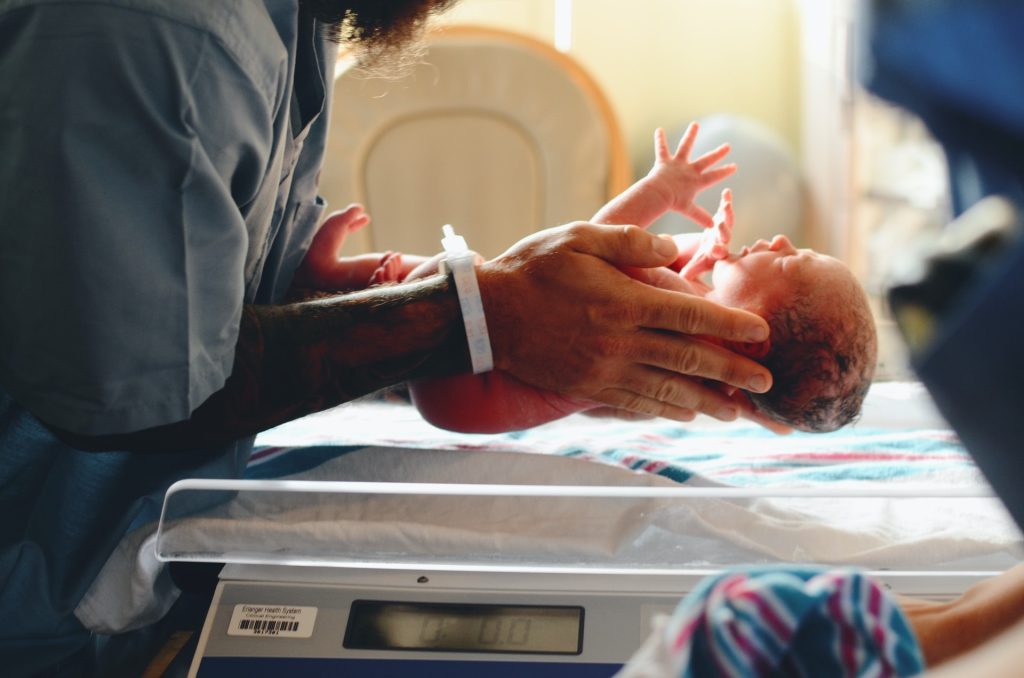Delayed Umbilical Clamping in Preterm Babies Saves Lives

A study following the effects of delayed umbilical cord clamping in preterm babies has found significant reduction in subsequent mortality and disability. The findings were published in The Lancet Child and Adolescent Health.
The study was a two-year follow up of the Australian Placental Transfusion Study, the award-winning and largest-ever clinical trial of delayed cord clamping of babies born before 30 weeks. Infants born preterm (before 37 weeks’ gestation) have poorer outcomes than infants at term, especially if born before 32 weeks.
The new study compared outcomes for over 1500 babies from the initial study, 767 with caregivers aiming for 60 second delay in clamping and 764 with caregivers aiming for cord clamping before 10 seconds after delivery.
Researchers found that delaying clamping reduces a child’s relative risk of death or major disability in early childhood by 17%. This included a 30% reduction in mortality before age two. In addition, 15% fewer infants in the delayed-clamping group needed blood transfusions after birth.
The leader of the study, Professor William Tarnow-Mordi, said the simple process of aiming to wait a minute before clamping will have significant global impact.
“It’s very rare to find an intervention with this sort of impact that is free and requires nothing more sophisticated than a clock. This could significantly contribute to the UN’s Sustainable Development goal to end preventable deaths in newborns and children under five – a goal which has really suffered during the pandemic,” he said.
“Applied consistently worldwide, aiming to wait a minute before cord clamping in very preterm babies who do not require immediate resuscitation could ensure that an extra 50 000 survive without major disability in the next decade,” said biostatistician Dr Kristy Robledo from the University of Sydney who led the two-year follow-up analysis.
“In other words, for every 20 very preterm babies who get delayed instead of immediate clamping, one more will survive without major disability.”
Delayed umbilical cord clamping is routine in full term babies to allow the newborn time to adapt to life outside the womb, however, until recently, clinicians generally cut the cord of preterm babies immediately so urgent medical care could be given.
“Ten years ago, umbilical cords were routinely clamped quickly after a very preterm birth and the baby was passed to a paediatrician in case the child needed urgent help with breathing,” said Professor Tarnow-Mordi.
“But we now know that almost all very preterm babies will start breathing by themselves in the first minute, if they are given that time.”
“We think that, after delaying cord clamping, babies get extra red and white blood cells and stem cells from the placenta, helping to achieve healthy oxygen levels, control infection and repair injured tissue.”
The childhood follow-up to the Australian Placental Transfusion Study is the largest world-wide two-year follow up of preterm cord clamping providing the best evidence so far on positive outcomes at two years of age.
In 2017, a systematic review of randomised trials in nearly 3000 preterm babies provided the first evidence indicating that delayed umbilical cord clamping might have benefits for preterm infants and their mothers.
While the World Health Organization recommends that newborns, including preterm babies who do not require positive pressure ventilation should not have their cord clamped earlier than one minute after birth this has not always been consistently applied.
“Moving forward it’s vital that perinatal professionals record the time of first breath and cord clamping to the second during births to allow for robust, large-scale data to further our work in this area,” said co-author Professor Jonathan Morris.
“Intensive staff training in the new protocols will also be vital as it can be daunting to delay treatment in very early and sick babies, but the evidence suggests this results in the best outcomes for these children.”
Source: University of Sydney

